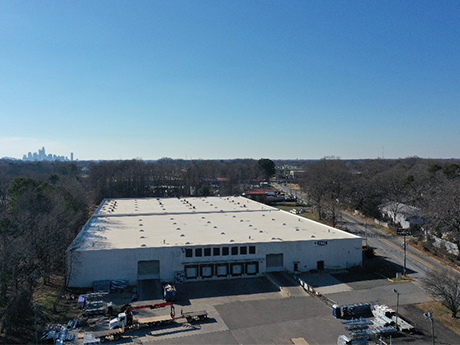The Charlotte industrial market continues to display resilience in 2025, navigating a national slowdown with more stability than a lot of other markets. While economic headwinds and record supply volumes have created challenges nationally, Charlotte’s fundamentals remain anchored by consistent tenant demand, especially for Class A space under 200,000 square feet. As vacancy stabilizes and rent spreads narrow between asset classes, a clear flight to quality trend is reshaping how tenants prioritize space and make leasing decisions throughout the region.

In first-quarter 2025, Charlotte recorded just over 1 million square feet of net absorption, maintaining positive momentum while absorbing the wave of speculative deliveries over the past several years. Fifty-six percent of all leases signed in the first quarter were for Class A space — the highest percentage recorded for Class A product since 2016, according to research from Avison Young. This stands out in light of the significant volume of new construction deliveries that have come on line vacant in recent years. With the rent premium between Class A and B product narrowing, tenants are increasingly seizing the opportunity to relocate into newer, more efficient facilities.
The tenant-in-the-market (TIM) pipeline tells a compelling story. More than 12 million square feet of active requirements were tracked entering the second quarter, with nearly 65 percent of demand focused on footprints below 200,000 square feet. This growing preference for efficiency and flexibility, combined with users’ desire for newer facilities, is pressuring availabilities in that segment and tightening options in a supply-heavy market.
Despite the headlines of a slowdown nationally, Charlotte’s market is adjusting as tenant needs evolve and investors take a more targeted approach, favoring infill locations and prioritizing stabilized or preleased properties over speculative plays.
On the macro level, the U.S. industrial sector is settling down after a period of unprecedented growth. According to Avison Young, vacancy rates have plateaued at 8.7 percent, the highest since 2012. Net absorption has returned to pre-COVID averages for the first time since 2022, and developers are tapping the brakes — giving the market time to absorb surplus space and slowing the pace of new deliveries.
However, Charlotte has continued to attract development and investment due to its central location on the East Coast, extensive infrastructure and sustained economic growth. Notable first-quarter lease transactions included Reynolds Consumer Products’ 360,000-square-foot commitment to remain in Cabarrus County and Capital Electric’s 258,000-square-foot lease in the Airport submarket. There is approximately 1.3 million square feet of industrial product currently under construction in the North submarket, positioning the area to meet growing tenant demand in the latter half of the year.
From an investment standpoint, Charlotte saw continued institutional interest in the first quarter. Notable trades included LaSalle Investment Management’s $27.8 million acquisition of a 263,690-square-foot facility in Statesville and Stonelake Capital’s purchase of a fully stabilized, 123,000-square-foot, multi-tenanted asset in the core infill submarket — both reflecting per-square-foot pricing north of $100.
Interestingly, while new deliveries have kept headline vacancy rates elevated, not all space is created equal. Older bulk product — typically featuring clear heights at or below 24 feet — has experienced rising vacancy, up 4.8 percent year-over-year. Conversely, vacant Class A inventory has declined by 3 percent during the same period, reinforcing the bifurcation in demand and underscoring the strategic positioning of modern industrial assets.
Landlords and developers are also becoming more tactical. Several groups are considering demising large blocks to better meet the growing demand for sub-100,000-square-foot spaces, though rising construction costs and capital constraints have slowed these repositioning efforts. While the current cost of capital continues to influence leasing and development decisions, long-term market fundamentals remain strong, particularly with reshoring and nearshoring trends expected to accelerate in the second half of the year.
In summary, the Charlotte industrial market enters midyear 2025 with cautious optimism. While headline vacancies remain elevated due to recent delivery volume, the underlying metrics suggest healthy rebalancing. Tenant demand is realigning toward quality and operational efficiency, bolstered by Charlotte’s regional strengths in workforce, transportation infrastructure and economic diversity.
With more clarity around policy and global trade expected in the second half of the year, Charlotte is well-positioned to ride the next wave of industrial growth — driven by demand for modern facilities and strategic access to key logistics corridors.
— By Abby Rights, senior vice president, industrial, Avison Young. This article was originally published in the June 2025 issue of Southeast Real Estate Business.


